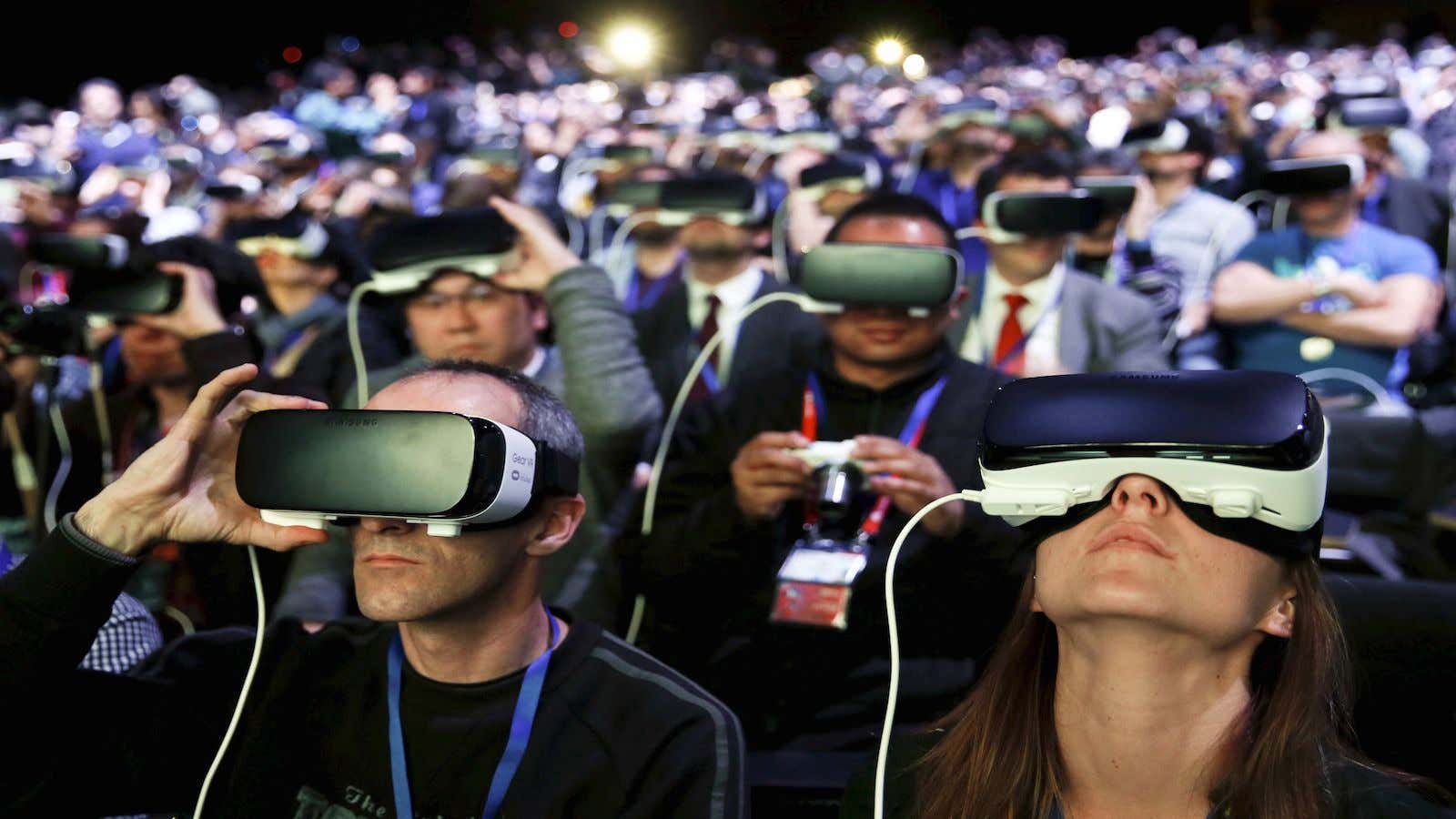It’s impossible to understand the fear felt by the rangers of the Democratic Republic of the Congo’s Garamba National Park, crouched in the bush, surrounded by dense elephant grass, with no certainty of what lies beyond it. They’re the last line of defense between the park’s elephants and poachers.
To convey that, Oscar-winning director Kathryn Bigelow has placed audiences there, in the bush with the rangers—through virtual reality.
Bigelow is no stranger to a hyper-realistic style of immersive storytelling. She directed The Hurt Locker and Zero Dark Thirty, two intense films that use first-person views to embed audiences in her subject’s high-stakes worlds of Iraqi bomb patrols and the assassination of Osama bin Laden, respectively. But the documentary short The Protectors: Walk in the Ranger’s Shoes is Bigelow’s first foray into VR. She’s one of a handful of high-profile filmmakers experimenting with the nascent medium.
Ridley Scott produced a disturbing, 360-degree VR experience to promote his forthcoming feature Alien: Covenant, due in US theaters on May 19. Jon Favreau, of Swingers and Iron Man fame, worked on the animated VR short Gnomes and Goblins last year and has reportedly been looking back (paywall) to illustrator Walt Disney to figure how the technology can be used to connect with audiences.
Alejandro González Iñárritu, who directed the introspective journeys Birdman and The Revenant, is premiering a VR project about Mexican and Central American refugees called Carne y Arena at the Cannes Film Festival in May. And the Tribeca Film Festival in New York showcased more than two dozen VR films this month, including The Protectors and works from musicians John Legend and Pharrell Williams.
“I think we are in the baby steps,” Iñárritu told audiences at the Tribeca Film Festival. “We don’t know anything. I don’t know anything. But I think the possibilities are amazing and the opportunities are enormous. We have to make sure it is used correctly.”
Like artists in the early days of cinema, filmmakers are throwing out the playbook on how to tell visual stories with VR. They’re starting with how to engage audiences emotionally. ”One of the biggest mistakes of VR is that people think it’s an extension of cinema and it’s not,” Iñárritu, added. ”In cinema, it is this little hole we look though and everything not in that frame we have to make up in our minds. But virtual reality is the opposite.”
Directors have to find new ways to focus the audience’s attention when they are no longer confined to a rectangular screen, slow down the shots to give audiences time to adjust to the visual environment, and simplify the story to fit in the span of a few minutes, as any longer would be uncomfortable for viewers. Bigelow’s The Protectors clocks in around eight minutes.
The documentary short, which will be released by National Geographic Documentary Films on the Within VR app on May 1 and YouTube and Facebook360 on May 8, promotes the non-profit conservation group African Parks, which manages Garamba and other national parks. It was co-directed with Imraan Ismail, who has a visual effects background and has work on 10 VR projects, including the New York Times’s VR film, The Displaced (paywall).
“The biggest challenge that Imraan and I looked at when making this piece was how to activate the audience,” said Bigelow, also speaking at the Tribeca Film Festival. “How do you take it from being informative one step further and engage the viewer with a call to action? We used VR to put people into a very active relationship with the subject.”
The Protectors isn’t complex. The video quality isn’t spectacular. And the cuts and camera pans can feel jarring at first.
But it offers a perspective and feeling that most will never know unless they’re on the ground in this remote and dangerous region. The filmmakers wanted to showcase the ranger’s heroism, as well as their complexity through the juxtaposition of care-free children in the village next to soldiers training to protect the park’s elephants, Ismail told Quartz.
